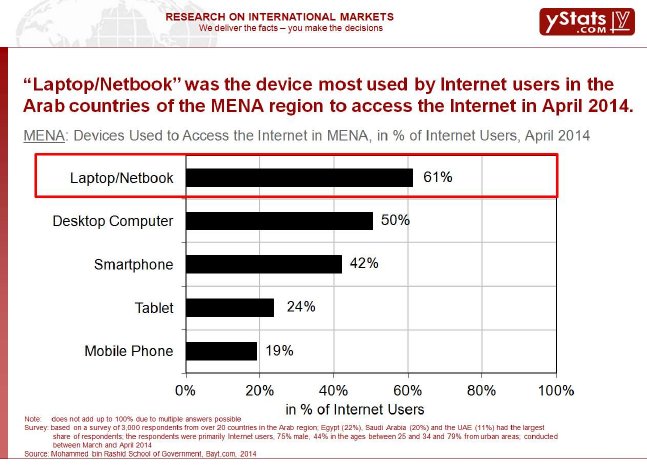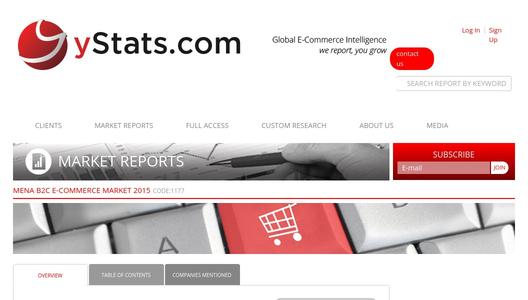The E-Commerce market in the Middle East and Africa has the potential to grow at small double-digit rates in the next five years, with the B2C segment forecasted to account for close to one-third of the total online sales in the region. Driven by improving Internet penetration, rising ownership of mobile devices and payment cards, online retail in these countries is set to boom in the near future.
The leading country in the region on many accounts is the UAE. This country has the highest Internet, mobile device and payment card penetration, which all contribute to making the UAE the market with the largest B2C E-Commerce sales. With more consumers shopping online every year, the share of B2C E-Commerce on total retail sales of goods in the UAE is forecasted to triple between 2014 and 2019. UAE is also a home market to the major E-Commerce merchant in the MENA region, Souq, with the online shops Souq.com and Sukar.com.
Saudi Arabia is another Middle Eastern country that ranks high in the MENA region by the characteristics relevant to B2C E-Commerce. M-Commerce has an especially high potential there, with more than two-thirds of online shoppers making their latest online purchase via smartphones according to a survey done last year.
Morocco and Egypt are most advanced markets in the North Africa part of the MENA region in terms of Internet penetration, which reached more than half of the population in these countries last year. Still, online shopper penetration stood at below 10%, though especially in Morocco, the number of users buying over the Internet has grown significantly. In Egypt, Facebook plays a significant role in online shopping. This social network not only generates traffic for online merchants such as Souq.com and Jumia, but is also regarded by online shoppers as a website for direct placement of orders.
Other important regional markets include Bahrain that shows one of the fastest growth rates in B2C E-Commerce sales. Qatar, the country with the third highest per capita GDP worldwide, on the other hand, had less than 20% of Internet users making purchases online, despite the fact that the majority of residents already have Internet access.


